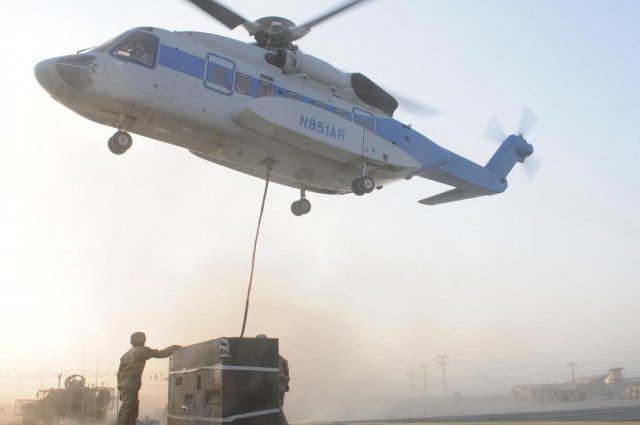Intense, excitement and fun are some of the words that begin to describe the way two parachute riggers from the 101st Sustainment Brigade “Task Force Lifeliner,” 101st Airborne Division (Air Assault), feel as they prepare for sling load operations.
Spc. Vonza Abney, a native of Hinesville, Ga., and Pfc. Hanook M. Chi, a native of Seoul, South Korea, arrive every morning prepared to face the wild and chaotic rotor-wash in order to sustain Soldiers through sling load operations.
As the aircraft hovers above these two riggers ready to pick up the cargo, the Soldiers brace themselves against the strong winds and debris that they know is coming their way. Although it can be a bit painful at times, the riggers always complete the mission and hook the load to the belly of the aircraft.
This top priority task provides troops with the necessities needed to continue operations in Afghanistan throughout forward operating bases in Regional Command-East, Regional Command-North and Regional Command-Capital.
The air operations sling load team conducted a total of 322 sling load operations during the months of June and July, moved more than 600 metric tons of cargo to troops. The team sling loads everything, from food for survival to ammunition for their weapons.
According to Sgt. 1st Class Thomas E. Mace, a native of McEwen, Tenn., and air mobility noncommissioned officer in charge with Task Force Lifeliner, the benefit of the sling load is that it allows cargo to be moved more easily and efficiently when other methods of transportation may be affected by the size.
Mace excitedly explained, “You can get it done quicker, you don’t have to have the fork [forklift] out here if you already got everything staged, all you’re doing is ‘hooking and booking.’ You’re not having to sit around.”
Abney explains in detail the process of their daily sling loads.
As a rule, the riggers first conduct a thorough inspection of the cargo. They look for things that may endanger the cargo, the aircraft and personnel.
“You want to use tape because you don’t want any excess like strings or something that can potentially get caught on the sling loads itself. You want to make sure everything is secure and tight,” explained Abney.
After the inspection and the aircraft arrives on the scene, the riggers speak with the pilot and they decide what type of sling load will be conducted that day. Between the two riggers and their noncommissioned officer in charge they decide which duties each will have for that particular day.
Finally, using hand signals they guide the pilots to the cargo for pick up then hook the load to the bird. Once the sling is secured, the Soldiers quickly dash away from the aircraft so the load can be airlifted safely up and away.
This job is not easy. It takes a lot of hard work and dedication to do this type of work, but in the end the riggers feel rewarded.
“I like it. I like the rush, the adrenaline rush,” explained Abney. “It’s fun, it’s something new every day as far as loads goes and I just enjoy it. It makes me feel good that I’m actually supplying people who need supplies. Getting [supplies] to them safely so that convoys can stay off the roads.”










